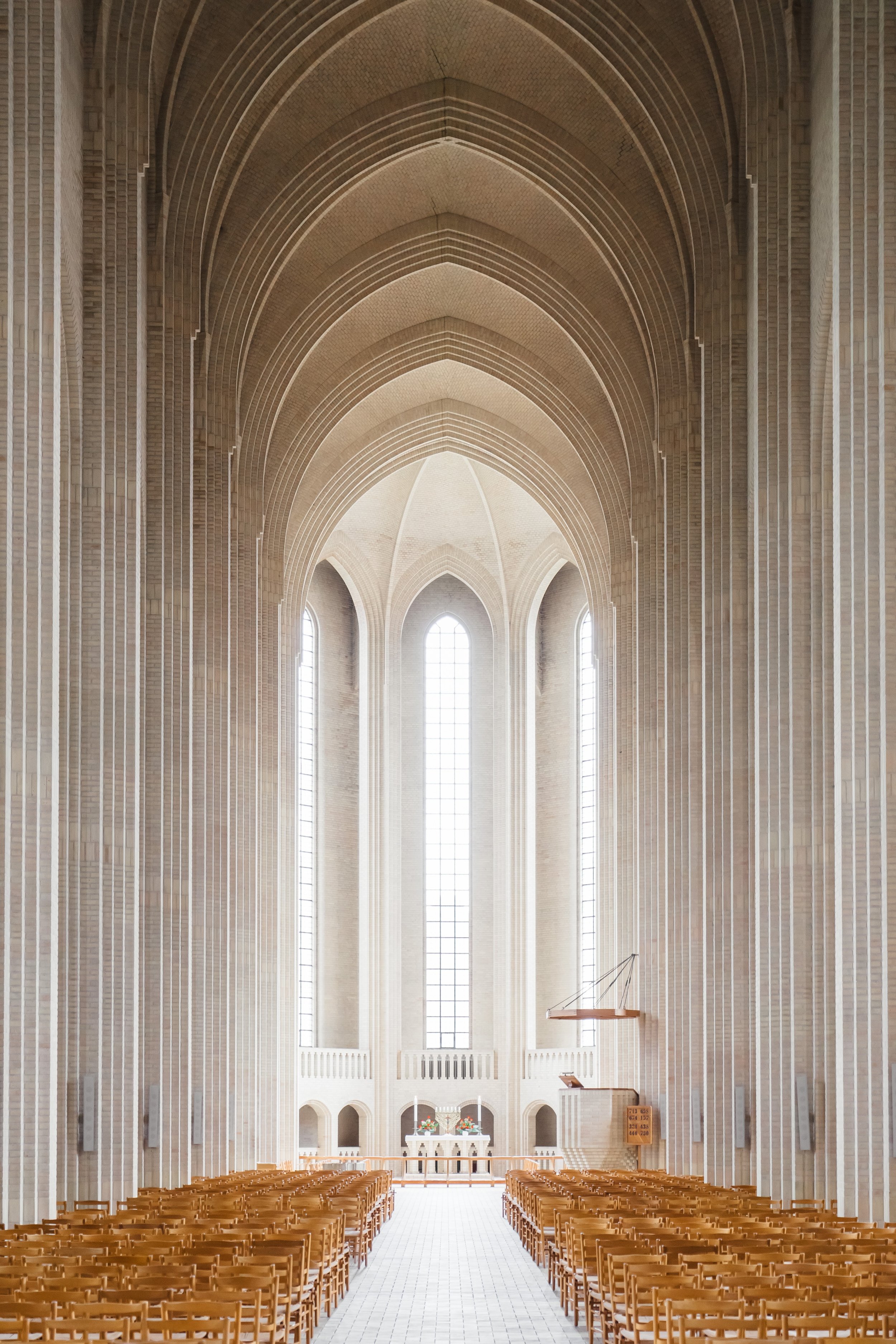Telescopes of stone.
One of my singular delights rarely indulged in, is to read a design magazine unhurriedly on a Saturday morning. I roll up the magazine in one hand, my sans-handle cup filled with coffee in the other, reclined in my frightful La-Z-Boy with the early morning light streaming in through windows and skylights. This scene is a significant part of my recipe for creative thought.
When I followed my formula one morning, I relished the pages of an October 2009 issue of Dwell magazine. I turned a page, and my attention was arrested by what I took to be a picture of the vaulted ceiling that dominates the interior of the York Minster in England. Light streaming in from triptych stained-glass windows illuminated the webbed canopy. The image that caught my attention graced the cover of a book of photographs of Romanesque and Gothic cathedral vaults, and the picture accompanied a short review. The illustration drew me into the copy, and I found the real nugget of gold in the anonymous article.
Photo by JOHN TOWNER on Unsplash
The author wistfully observes that these kinds of buildings hold our fascination because they can and will never be built again because we cannot afford it, and because, well…”We don’t know how.” This observation was juxtaposed with the following paragraph, which I thought was an incredibly eloquent statement that deserves deeper consideration:
“These buildings, some nearly a millennium old, are charged with the grandeur of God, as though the architects, suddenly doubting that it could be read in nature, decided to codify it in stone (Dwell, Oct. 2009, 42).”
First, the author observes that (I assume) the human designers and executors charge the buildings with the grandeur of God. The conscious exercise of the architects and builders was to create and fill a space that attempted to communicate the awesomeness of God. They succeeded because they drew the eyes of those who entered this sacred space upward. Second, the author says that the designers were impelled to intention because people missed this awe in the commonplace that nature has become. In the cathedral of nature, the earth from which they derived their sustenance drew the eyes of peasants downward. The designers had a priestly duty to mediate the grand attributes of God to a less imaginative but hopefully impressionable generation. When others missed the obvious presence of God, those who knew him intimately struggled to construct a grand telescope of stone and mortar, as it were, so that they could see him if they would only look. Ironically, the author suggests we will never see their kind again.
A few pages earlier is an interview with contemporary designer Philippe Starck, who seems obsessed with liars, thieves, and bad religion. Suppose the redactor’s selectivity is an indication. In that case, Starck blames a great deal on being brought up, at least, with religious education while acknowledging that it helped make him what he is. From his self-righteous mistrust, he has fashioned a world of whimsy that includes a dream to kill (repurpose?) materiality and that he believes justifies his existence (“…I do believe we all have to try to deserve to exist.” So some don’t deserve to exist? What do we do with them (me?)? Ibid., 40) with fifteen iPods and sleep his only apparent comforts. I found the interview confusing and contradictory and wondered what wonders Starck was mediating to a suffering humanity. He needs mediation, but the dunderheads who misrepresented the God of the universe inoculated him against the best antidote to materiality. He grew up in an epoch that forgot how to build telescopes.
Instead, I can imagine microscopes being offered to Starck by well-meaning (but equally confused) emergents who would praise his art, cluck their sympathies for his mistreatment at the hands of the religious, and join him in his anti-materiality crusade without ever holding out a vision of the greater story of the God of nature and the vault. Microscopes beneath the canopy of space are plentiful, cheap, and boring.
The anonymous book reviewer uncovered an insight that we must meditate upon vis-à-vis the mediatorial designers of cathedrals: we will never see their kind again. No more telescopes of stone, mortar, and glass. Too costly. We don’t know how. Rigidity failed. The anemic identification practices of the emergent will yield no more dialogue with wanderers than his modernist forbears experienced in the last century. So, at last, I come to the question inspired by the insightful sentence: Who (rather than what) will be charged with the grandeur of God in such a way that the eyes of others will be drawn upward?
